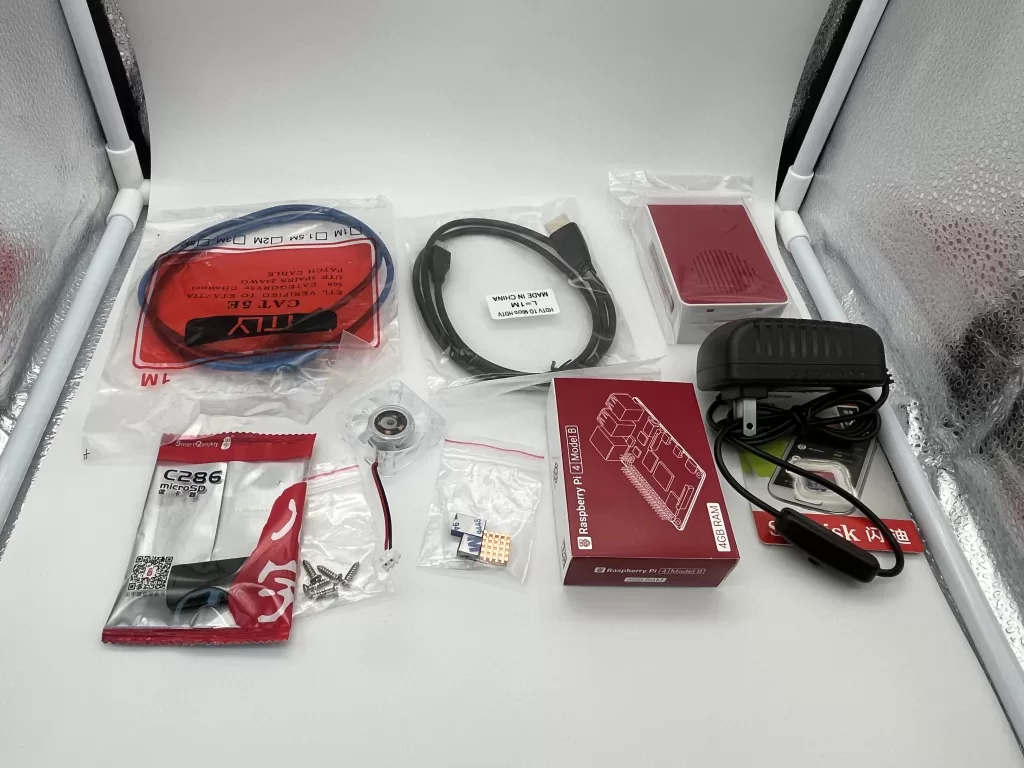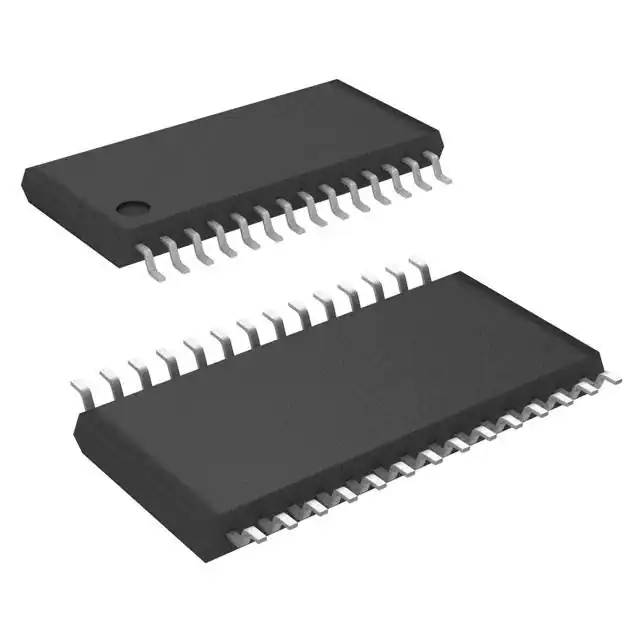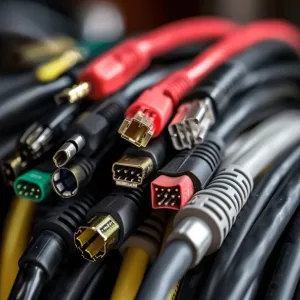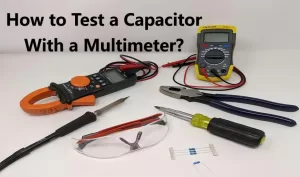Basic electronic components known as resistors are essential for regulating the flow of electric current in circuits. They are widely used in conte...
View detailsJumpstarting Your Fuel Pump Relay: What You Need to Know
An essential part of your car's fuel system is the fuel pump relay. It is in charge of regulating the electricity flow to the fuel pump, which makes sure the engine has enough fuel to run smoothly.
Understanding the fuel pump relay is essential for any car owner or enthusiast. In this blog, we will explore the various aspects of the fuel pump relay, including its location, lifespan, functionality, symptoms of failure, and even explore the possibility of bypassing it.
What’s a Fuel Pump Relay?
The fuel pump relay is a tiny electromechanical switch that regulates the fuel pump's electrical current flow. Though its precise location may differ based on your car's make and model, it is normally found in the underhood fuse box.

There are four terminals on the fuel pump relay:
- Power source: The battery provides power to this terminal.
- Ground terminal: This terminal is connected to the vehicle's chassis via ground.
- Control terminal: When the ignition is set to the "start" or "run" position, this terminal receives a signal from the engine control unit (ECU).
- Fuel pump terminal: Power is sent to the fuel pump via this terminal.
The fuel pump relay receives a signal from the ECU when the ignition is turned on. By doing this, the relay is triggered, closing the switch and supplying the fuel pump with electricity. At that point, the fuel pump activates and starts supplying fuel to the engine.
Fuel Pump Relay Symptoms
The electrical component known as the fuel pump relay manages how your car's fuel pump functions. A malfunctioning fuel pump relay can cause several symptoms. Here are some common symptoms that may indicate a problem with the fuel pump relay:
- Engine cranks but doesn't start: If the engine turns over when you turn on the ignition, there may be a problem with the fuel pump relay. If the relay malfunctions, the fuel pump might not get the power it needs to supply fuel to the engine. The relay regulates the fuel pump's power supply.
- No fuel pressure: This can be caused by a malfunctioning fuel pump relay. While driving, this may cause the engine to sputter, hesitate, or even stall. Poor acceleration or a lack of power could be the result of low fuel pressure brought on by a malfunctioning relay.
- Engine stalls after starting: A malfunctioning fuel pump relay could be the cause of an engine stalling soon after starting. The engine may lose fuel pressure and shut off if the relay is unable to supply the fuel pump with a steady power source.
- Noisy fuel pump: The fuel pump may operate sporadically or at a lower capacity due to a malfunctioning fuel pump relay. This may cause the fuel pump to operate noisily, as evidenced by a whining or buzzing sound coming from the fuel tank.
- Check Engine Light: The Check Engine Light on your car's dashboard may occasionally be caused by a fuel pump relay going bad. The warning light may be activated by the onboard diagnostic system if it finds a fuel pump relay malfunction.
It is advised that you have the problem inspected and diagnosed by a qualified mechanic if you encounter any of these symptoms. If necessary, they can replace the fuel pump relay after conducting tests to ascertain whether it is the root of the issue.
What does the Fuel Pump Relay do?
A fuel pump relay is an electrical switch that controls the flow of electricity to the fuel pump. It's an essential part of the fuel system and keeps the fuel pump powered up enough for it to work correctly.
The fuel pump relay receives a signal from the powertrain control module (PCM) when you turn on the ignition. The fuel pump can now receive electricity after the PCM instructs the relay to turn on. After that, the fuel pump transfers fuel to the engine from the fuel tank.
Once the engine is running, the PCM turns off the fuel pump relay. This stops fuel from being wasted by the fuel pump operating nonstop.
Despite being a rather simple part, the fuel pump relay is crucial to the fuel system's correct operation. The engine won't start if the fuel pump relay malfunctions because the fuel pump can't function.
How Does Fuel Pump Relay Work?
- Upon turning on the ignition, a signal is sent to the fuel pump relay by the powertrain control module (PCM).
- The PCM sends a signal to the fuel pump relay, which then activates.
- Fuel pump electricity flow is made possible when the fuel pump relay is turned on.
- Fuel is then transferred to the engine by the fuel pump from the fuel tank.
- The fuel pump relay is turned off by the PCM once the engine starts.
- There is no electricity going to the fuel pump when the fuel pump relay is off. As a result, fuel is not wasted by the fuel pump operating constantly.
Where is the Fuel Pump Relay Located?
The location of the fuel pump relay can vary depending on the make and model of your vehicle. However, there are a few common locations where you might find the fuel pump relay:
- Under the hood: The fuel pump relay is often found in a relay/fuse box in the engine compartment of many cars. The fuel pump relay can be recognized by its label or by the diagram on the inside of the relay box cover. The relay box is typically labeled. Search for a relay with electrical connectors that is square or rectangular.
- Under the dashboard: In certain cars, the fuel pump relay is situated close to the footwells on the driver's and passenger's sides, beneath the dashboard. It might be concealed behind other parts or the fuse panel. See the owner's manual for your car or look up a repair manual for that particular location.
- In the trunk: The fuel pump relay may be found in the trunk of certain car models, especially those with rear-mounted fuel tanks. In the trunk area, usually by the spare tire or on the side walls, look for a relay box or panel.
It's crucial to remember that, even within the same car model, the precise location of the fuel pump relay can change. For precise location information, it is therefore advised to refer to the owner's manual or repair manual for your car. It is advisable to seek advice from a qualified mechanic or consult your vehicle's professional service documentation if you are unsure or unable to locate the fuel pump relay.
How Long Does a Fuel Pump Relay Last?
A fuel pump relay is a relatively durable component, and it is typically designed to last the life of the vehicle. However, there are a few factors that can affect the lifespan of a fuel pump relay, including:
- Heat: Under a car's hood, fuel pump relays are subjected to intense heat. Over time, this heat may cause the relay's components to deteriorate.
- Vibration: The engine causes a lot of vibration that also affects fuel pump relays. Over time, this vibration may also lead to the wear and tear of the relay's components.
- Moisture: Moisture can also harm fuel pump relays. The electrical contacts on the relay may corrode if moisture gets inside of it.
You might need to replace your fuel pump relay sooner than you think if you drive on bumpy roads or live in a hot climate. If you drive a car with a lot of miles on it, it's also a good idea to have your fuel pump relay checked and replaced regularly.
How to Bypass the Fuel Pump Relay?
To bypass the fuel pump relay, you will need a pair of jumper cables.
- Cut the battery cable off from the battery's negative terminal.
- Connect one end of a jumper cable to the positive terminal of the battery.
- Connect the jumper cable's other end to the fuel pump relay's fuel pump terminal.
- Connect the other end of the jumper cable to the fuel pump relay's battery terminal. This will ignite a spark, causing the fuel pump to turn on.
- Remove the jumper cable as soon as the engine starts.
Is it Safe to Bypass the Fuel Pump Relay?
Getting around the fuel pump relay is not advised. Ignoring the relay has the potential to harm the car's electrical system, including the fuel pump. A hazard of fire may also result from it.
It is crucial to proceed cautiously and save bypassing the fuel pump relay for the very last option. Make sure you refer to the owner's manual of your car for guidance on safely bypassing the relay.
How to Check the Fuel Pump Relay?
There are a few ways to check the fuel pump relay:
- Visual inspection: Take the fuel pump relay out of the fuse box and look for any visible signs of damage, like corrosion, burns, or cracks. Replace the relay if you notice any damage.
- Continuity test: Make sure the fuel pump relay is still operational by using a multimeter. Place the probes on the fuel pump terminals and set the multimeter to the continuity setting to accomplish this. The relay is operating correctly if the multimeter beeps. The relay needs to be changed if the multimeter is not beeping.
- Voltage test: Check the voltage at the fuel pump relay using a multimeter. Place the probes on the fuel pump terminals and set the multimeter to the voltage setting to accomplish this. The voltage must match the voltage of the battery. The relay needs to be replaced if the voltage is less than that of the battery.
Video related to How to Check a Fuel Pump Relay
Can a Bad Fuel Pump Relay Cause Misfire?
Yes, misfires can result from malfunctioning fuel pump relays. When the engine is unable to ignite the air-fuel mixture in one or more cylinders, misfires happen. There are several potential causes for this, one of which is a malfunctioning fuel pump relay.
The fuel pump may not receive enough power if the fuel pump relay is malfunctioning. This could lead to a misfire by preventing the fuel pump from providing the engine with enough fuel.
Conclusion
The fuel pump relay is a critical component of your vehicle's fuel system, ensuring the efficient and reliable delivery of fuel to the engine. You can effectively troubleshoot issues and make decisions if you are aware of its location, functionality, failure symptoms, and potential bypass. Keep in mind that safety should always come first and that it should only be done carefully and under specific conditions to bypass the fuel pump relay. You can avoid unplanned malfunctions and expensive repairs by routinely inspecting and maintaining your fuel pump relay. Start learning about the fuel pump relay now to ensure that your car runs smoothly down the road.
FAQs about the Fuel Pump Relay
When to Replace the Fuel Pump Relay?
It is crucial to have the fuel pump relay inspected and, if required, replaced if you encounter any of the symptoms associated with a malfunctioning unit.
If the fuel pump relay is damaged or has been in use for several years, you should also replace it.
What Controls the Fuel Pump Relay?
The engine control unit (ECU) is in charge of the fuel pump relay. To ascertain how much fuel the engine requires, the ECU keeps an eye on several sensors, such as the mass airflow sensor and the crankshaft position sensor.
The fuel pump is turned on by the fuel pump relay, which receives a signal from the ECU indicating how much fuel is required.
Where Does the Fuel Pump Relay Get Power From?
The battery provides power to the fuel pump relay. Next, the fuel pump relay receives power via the ignition switch.
The fuel pump relay receives a signal from the ignition switch when the key is turned to the "start" position, turning on the fuel pump.
Ella
Ella is a skilled embedded systems engineer with experience in PCB design and microcontroller programming. She is committed to following the most recent developments in the field and is constantly seeking for ways to apply them to her work.
WEW ALL POSTS BYElla-
Taking a Closer Look at Resistors: Functions and Applications 259
-
RG6 vs RG59: Which Coaxial Cable Should You Choose? 65
In this blog, we will delve into the key distinctions between RG6 and RG59 cables, empowering you to make an informed decision for your specific ne...
View details -
Digital Signal Processor Basics: A Comprehensive Guide to DSP 557
In this blog post, we will discuss the basics of DSP, including its meaning and components, how it works, and what it is used for. We will also dis...
View details -
Raspberry Pi vs Nvidia Jetson Nano: Which is Better? 199
The Raspberry Pi and the Nvidia Jetson Nano are two titans in the single-board computer (SBC) space. Although they both have amazing ability, each ...
View details -
Microprocessors Overview: A Look at the Brains of the Computer 272
Microprocessors are among the most crucial parts of contemporary electronic devices. They serve as the
View details -
How to Test a Capacitor With a Multimeter? 290
In many electronic devices, including air conditioners, amplifiers, and automobile audio systems, capacitors play a crucial role. A multimeter test...
View details
 Ampheo Electronics
Ampheo Electronics






